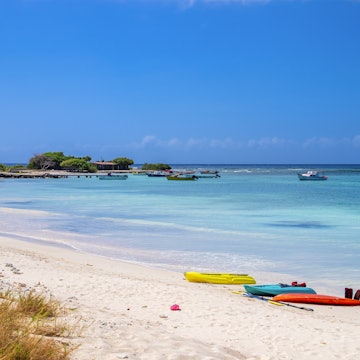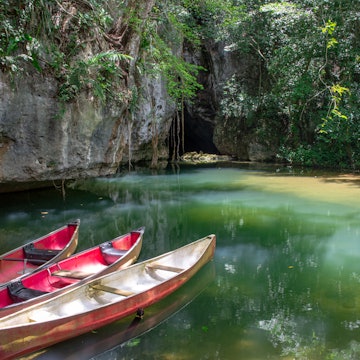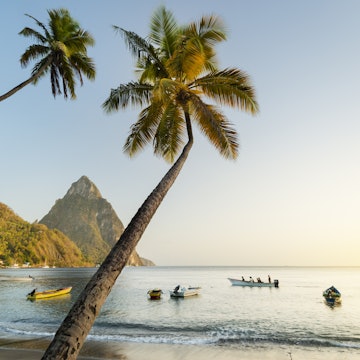

Gauchos (cowboys) in San Antonio de Areco province, Buenos Aires, Argentina. sunsinger/Shutterstock
Argentina’s culture and customs are some of the most distinctive in the Americas. But there are plenty of idiosyncrasies to getting by in this Southern Cone South American nation.
From the caprices of the currency through to late-night dining, and from cowboy culture to trip planning, here are 10 things to know before traveling to Argentina.

1. The seriously big distances to travel mean trip-planning takes time
For most people the epic proportions of the planet’s eighth-largest nation are a shock. A journey between two popular travel destinations, Puerto Iguazú in the northeast and Ushuaia, the world’s southernmost city, clocks up 4340km (2697 miles): equivalent to an east coast to west coast USA road trip.
While a liberal smattering of internal flights makes things easier, the cost and carbon footprint of relying on these means that, for many travelers, journeying overland will be a big part of any in-depth exploration here.
A six- to 12-hour bus ride to the next destination of interest is nothing exceptional. And a trip encompassing northern Argentina’s three key highlights alone – Buenos Aires, Mendoza and Puerto Iguazú – would take a week traveling overland, even if you only spent one night in each destination.
When it comes to train travel, the options are limited. The once extensive network has eroded over the years, and now any long-distance train destinations are marred with inconsistency.
If your time is limited, plan carefully where you want to visit and the distances in between. Take overnight buses to save time, but traveling this way takes its toll: spoil yourself with some non-wheeled accommodation the night after to recuperate.
2. Money is a complicated matter
Economic instability has dogged Argentina since at least the great depression of 1998 to 2002.
This devastating economic crisis resulted in the ditching of the Argentine Peso’s fixed exchange rate with the dollar and the drastic reconversion of public savings account rates, which meant that many people lost half the value of their savings or more. Unsurprisingly, this caused considerable social unrest.
Things still aren’t completely rosy: be sensitive if discussing finances with Argentines. With the high demand for stable foreign currencies, the government limits the amount of pesos that Argentines can exchange.
This has created a black market and a two-tier exchange system. The official rate is what you’ll get when withdrawing money from a bank. The black market or “dólar blue” exchange rate is more favorable and available from money changers on the street.
Official rates are slowly moving in line with blue rates, but the best solution for trip finances is to bring dollars (ideally) in cash to exchange on the street (euros or pounds can be exchanged, too).
Both official and blue rates fluctuate frequently, and inflation is sky-high: check xe.com for the latest official rates and bluedollar.net for the blue rates.

3. Argentina is one of Latin America’s safest countries
Argentina’s relatively hazard-free status for travelers (by Latin America’s standards) is a big attraction.
Locals are usually very amenable to chatting, which is particularly beneficial to solo travelers. You can gain valuable cultural insights through inhibition-dissolving activities such as drinking yerba mate and tango dancing.

Women and LGBTIQ+ travelers will feel safer in Argentina than in most other Central American and South American destinations. Argentines have attitudes and rights regarding gender and sexuality similar to those in North America and Europe.
Pickpocketing is generally the worst fate befalling any traveler, and even this is the exception, not the norm.
Nevertheless, it's sensible to take the same common-sense precautions you would in your home country. Armed robberies can occur, especially in larger cities: refrain from walking alone late at night or displaying valuables.
4. First impressions are important when meeting people
When meeting Argentines for the first time, wear something fashionable. In bigger cities like Buenos Aires or Córdoba, dress to impress or risk looking shabby beside chicly turned-out locals.
Argentina is a nation of socially affectionate people and a kiss on the cheek – man-to-woman, woman-to-woman or man-to-man – is standard (a warm handshake is OK too if you feel uncomfortable with the kiss).
And don’t – ever – be punctual for a rendezvous: no one here is. Showing up 15 minutes after the arranged time is about right.

5. Great food and drink are the heart of the culture
With beef and wine at the center of Argentine gastronomy, discussing the country’s culinary traits gets mouths watering fast.
Meat is often consumed as part of an asado – a barbecue cooked on a grill over open flames – and includes cuts of beef, chicken, pork, chorizo and morcilla (black pudding).
Getting invited to an asado at an Argentine’s house is a privilege and offers a peek into the many traditions involving what meat is served and when. But if you can’t snag an asado invitation, there are plenty of restaurants to sample the goods.
Steak lovers can order ojo de bife (rib eye), lomo (fillet) or matambre (flank) when eating out. A few standouts include Gran Parrilla del Plata (Chile 592-594, San Telmo) and Parrilla Don Julio (Guatemala 4691, Palermo Viejo) - generally considered the very best and long-standing.
A full-bodied red washes the meat down. The nation’s signature wine is malbec, a deep-hued, plum-flavored vintage grown in western Argentina’s Mendoza region.
Argentine teatime – merienda – is a lavish affair too. With dinner eaten late, this early-evening banquet of tostados (toasted cheese-and-ham sandwiches), medialunas (croissants) and alfajores (cookies sandwiched with caramel-like dulce de leche) keeps bellies fueled in between times.
6. Argentines stay up late… really late
Consider yourself a night owl? Argentina rewrites the rulebook on staying up. Stop by a restaurant for dinner at 6pm and you’ll likely find it closed or dead – or full of other tourists who didn’t read this article before traveling.
Many places don’t serve evening meals until 8:30pm, and locals normally dine around 10pm or 11pm.
As for bars, few get lively before midnight. These will stay open until 2am or 3am, and only then – should you have the energy – does the clubbing commence in earnest.

7. Mate is the way to make mates
One of Argentina’s most cherished rituals is partaking of the infusion known as yerba mate (pronounced “mah-tay,” invariably shortened to mate and often anglicized to maté in order to distinguish your drink from your buddy).
Mate originated with the Guarani people of Argentina, Paraguay and Brazil. However, this bittersweet brew, concocted with mate leaves and hot water, has become synonymous with rural life in Argentina and the gaucho culture that is intrinsically linked to it, although the significance runs far deeper.
Passing the gourd (the vessel in which mate is traditionally served) between friends, colleagues or even strangers symbolizes togetherness and mutual respect or camaraderie among those who partake.
If anyone in Argentina offers you the opportunity to participate in this cornerstone of the country’s etiquette, consider accepting for an ideal ice-breaking experience.
8. Argentina is among the southern hemisphere’s top trekking destinations
With the Andes mountains rimming its western frontier, the surreal desert landscape of the northwest, the northeast’s tropical jungle and the legendary wilderness of Patagonia to the south, Argentina is a hiking haven.
There’s the almighty clamber up 6962m (22,841ft) Aconcagua, the loftiest peak in the western and southern hemispheres, for starters, and the mesmeric Huemul Circuit through the southern Patagonian ice field.
Such epic multiday tramps are best done with a guide. But many shorter, equally enchanting routes await for independent walkers. Tackle the climb to view the multihued Cerro de Siete Colores (Hill of Seven Colors) above Purmamarca in Jujuy Province, or embark on rainforest rambles around thunderous Iguazú Falls, the world’s biggest waterfall system.

9. Having decent dance moves helps
A well-dressed couple performing some elegant tango moves on the streets, at a stage show or at a milonga (dance hall) is a fixture in Argentina and, in particular, Buenos Aires.
Tango was born in the capital in the 19th century and was popularized by figures like Carlos Gardel in the early 20th century. It's now Argentina’s defining dance, and knowing a few moves will certainly help win some respect when you’re out in the evenings.
But to truly appreciate the nightlife here, being able to swing your hips freely to the nation’s rhythms of choice is a prerequisite. Cumbia (a salsa-like two-step dance) is popular and easy enough to pick up as you sway to catchy numbers from bands like La Nueva Luna.
10. Cowboy culture is alive and kicking
Gauchos – Argentine cowboys – can be traced back to the 18th century as nomadic horsemen roaming the pampas (fertile grasslands) surrounding Buenos Aires.
Gauchos’ role in spurring Argentina to victory during the 19th-century War of Independence earned them immense respect nationwide.
They then settled grassy plains in Buenos Aires, La Pampa and Córdoba provinces, plus several other rural areas, based on huge estancias (ranches), where they kept alive their knowledge of horsemanship and other rustic skills that would likely otherwise have become obsolete.
Today, getting out to an estancia to embrace gaucho lifestyle is Argentina’s most iconic countryside experience: staying amid a beautiful bucolic landscape, feasting on hearty rustic fare like puchero (meat stew) and exploring the vicinity by foot or on horseback.
















